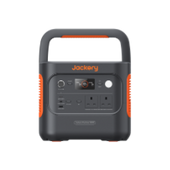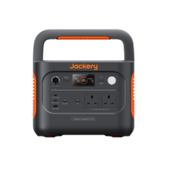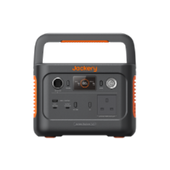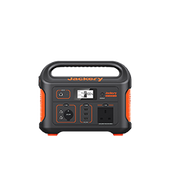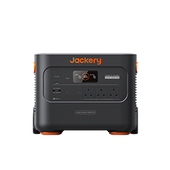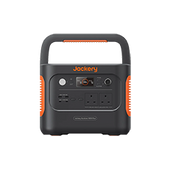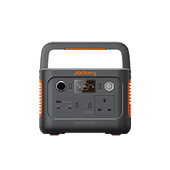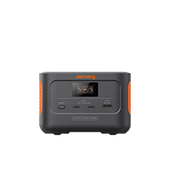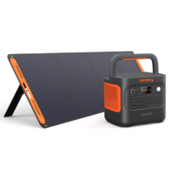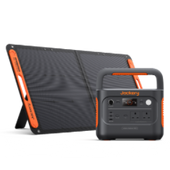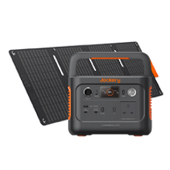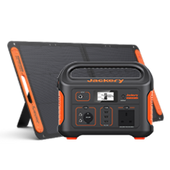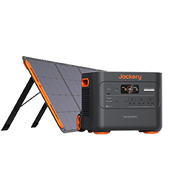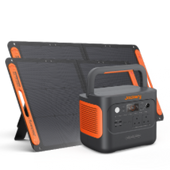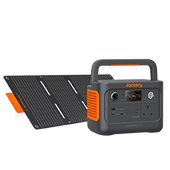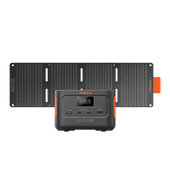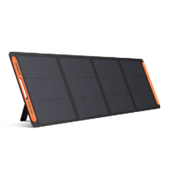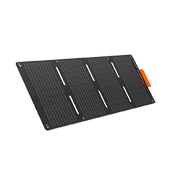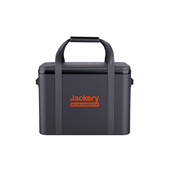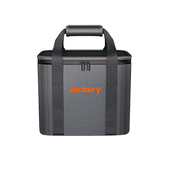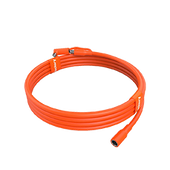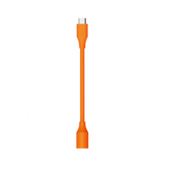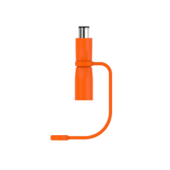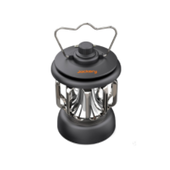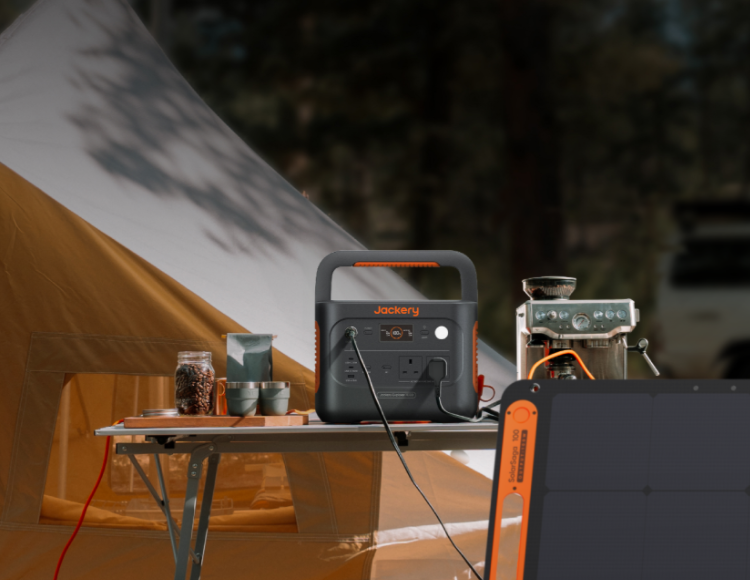Spring has arrived, and a spring garden full of life will allow you to enjoy the outdoors again. However, before enjoying a perfect spring garden, you must get busy planting and caring for it. Creating a spring garden can seem overwhelming, but here are nine simple steps to help you get started.
In addition, some practical tools will help make preparing a spring garden easier and more efficient. For example, an outdoor power source (such as a Jackery Solar Generator) can power tools such as drip irrigation kits to increase efficiency.
|
Key Takeaways: |
|
- Creating a spring garden full of life requires nine steps: garden cleaning, lawn care, pruning trees and shrubs, planting plants, and pest control. - To build a spring garden more easily, you need practical tools such as secateurs, spades, drip irrigation kits, compost bins, and outdoor power supplies. - When choosing suitable flowers and plants for a spring garden, you must combine ornamental, adaptable, and gardening design needs. - This section analyzes the challenges of a changing climate, pest outbreaks, weeds that may be encountered when preparing a spring garden, and solutions. - We recommend the Jackery Solar Generator 2000 v2 and 1000 v2 to power your outdoor gardening appliances effectively. |
How to Prepare a Spring Garden: A Step-by-Step Guide
A spring garden full of life will make you enjoy the outdoors again. While the right plants are essential, creating a beautiful spring garden still requires a lot of preparation and maintenance. Here is a detailed step-by-step guide to building a spring garden, combining the British climate with the characteristics of an English garden:

Step 1: Clean the Garden
The main task of cleaning the garden is to remove the dead leaves, broken branches and weeds accumulated during the winter and ensure that the soil surface is clean and disease-free. Then, remove the mulch, such as a frost-proof straw, and re-plan the planting area. Next, clean the gutters and drains to prevent spring rain from silting up. If you have a terrace or balcony, thoroughly clean and rinse it with plenty of clean water, and avoid using cleaning products.
Step 2: Test and Improve the Soil
Preparing the soil for the spring garden will give all new plants a good start. Soil that is too wet is not suitable for cultivation immediately. If the soil sticks together when you scoop it up with your hands, it is still too wet. You can start planting if the soil breaks up easily when you scoop it up. If you didn't add a layer of fresh organic compost in the fall, add it in early spring before planting.
Step 3: Lawn Care
Spring is a good time to fertilize, rake, and loosen your lawn. Proper lawn care enriches the soil with nutrients and adds new grass seed to give your lawn a fresh look. You can use herbicides or hand-pull weeds and then use a lawn mower or trimmer to cut the edges of the lawn neatly to improve the overall appearance. In addition, apply a spring slow-release fertilizer to the lawn, spread grass seed on bald spots, and lightly cover it with soil. Laying a layer of gravel in low spots can prevent water accumulation and cause lawn rot.
Step 4: Prune Trees and Shrubs
Trees and shrubs need to be pruned almost every spring, which ensures the spring garden's beauty and helps promote the growth of new branches. Pruning dead branches promotes new buds by removing dead or crossed branches, such as roses and hydrangeas. Flowering shrubs such as forsythia must be pruned after flowering to avoid cutting off flower buds.
When pruning trees and shrubs, use long-handled pruners to handle high branches and wear goggles. Before each pruning session, disinfect your pruning shears with a clean rag and some isopropyl alcohol to prevent accidentally spreading plant diseases throughout your garden.
Step 5: Planting Flowers and Plants
After making the basic preparations for your spring garden, you can add colour by planting various beautiful flowers. You can choose perennials and annuals and mix and match them to create an interesting spring garden design. For example, you can plant spring hardy flowers such as daisies, pansies, tulips, etc.
In addition, you can also plant a variety of vegetables to enjoy fresh produce at home. For example, broccoli, Brussels sprouts, cauliflower, cabbage, kale, peppers, and tomatoes are all seeds that are easy to grow indoors.
Step 6: Filling Buckets and Optimizing Irrigation Systems
Early spring is when the most rainfall occurs, which is a good time to collect rainwater. However, empty and scrub the container (bucket/pond) before storing water. You must also check that the pond pump is working correctly if necessary. When installing a rain barrel, place it under the shed or household downspout. The bucket drain is covered with fine mesh to prevent mosquito breeding.
Step 7: Fix Fences and Borders
Fitting fences and borders beautify and strengthen your spring garden and protect it from wildlife. Use a pressure washer to clean wooden fences, remove mould, moss, and dirt, and apply wood preservative paint. Use a stiff-bristle brush to remove stubborn dirt. Replace any rotten boards.
For metal fences, use a wire brush to clean rust and spray it with rust-proof paint afterwards.
Step 8: Pest Control
Even if you spend a lot of time and control measures to keep your garden clean and prevent the spread of disease, pests will still nibble at your plants. You need to check the crowns on the underside of your plant leaves for various pests, such as white vine weevils. Often, the easiest way to deal with this is to spray with an environmentally friendly insecticide. However, avoid overwatering and keep the soil just slightly damp.
Step 9: Set Up a Bird Box
Birds and other animals are attracted to your spring garden because they are looking for food. If you provide birds with different food sources, such as nuts, in a feeder, they will be less likely to nibble on your plants. Additionally, you can build birdhouses in trees or bushes to provide them with shelter and nesting space.
Tool List for Preparing a Spring Garden
Sharp, clean tools make preparing a spring garden easier and more efficient. They also help prevent the spread of disease between plants in the spring garden. Here is a list of valuable tools for the English spring garden in different functional categories:

Pruning and Shaping Tools
Here are the pruning and shaping tools you may need to prepare a spring garden:
Secateurs: Choose sharp and palm-sized models to prune thin branches of flowers and shrubs.
Hand Saw: It can handle thick branches over 2 cm in diameter. Folding models are recommended for easy storage.
Long-Reach Pruner: It can prune high branches to avoid climbing hazards.
Lawn Edger: You need to use it to trim the edges of the lawn and maintain neat lines.
Planting Tools
Here are the planting tools you may need to prepare a spring garden:
Spade: You can choose a durable carbon steel spade to turn the soil and dig holes for planting.
Rake: You can use it to loosen the soil, level the seedbed, and remove weeds and fallen leaves.
Seed Dispenser: This precision seeding gadget can accurately sow spring flowers and grass seeds, such as tulips and violets.
Garden Knife: You can cut roots, divide plants, or open fertilizer bags.
Irrigation and Maintenance Tools
The following are the irrigation and maintenance tools that may be used to prepare a spring garden:
Watering Can: A watering can with a shower head can accurately water seedlings to avoid water erosion.
Drip Irrigation Kit: This professional watering system saves water and is suitable for watering extensive spring gardens.
Shade Net: It can protect seedlings from occasional strong sunlight in spring.
Plant Labels: If your spring garden has many plants, you can use labels to record the names and dates of newly planted plants.
Other Practical Tools
In addition to the above basic tools, you may also need the following practical tools to prepare a spring garden:
Gardening gloves of non-slip and wear-resistant materials (such as rubber-coated ones) can protect your hands from moisture and prevent thorns from pricking.
Compost Bin: Prepare a compost bin for garden waste and homemade organic fertilizer.
Moss Killer: Please clean the moss on the paths and slabs in time to improve safety.
Tool Chest: You can sort and store all your tools in a dedicated tool chest to prevent them from being lost or rusting.
Outdoor Power Supply: When tidying up the spring garden, you will most likely need an outdoor power supply (such as Jackery Solar Generator) to improve the efficiency of power tools such as the drip irrigation kit.

What Plants or Flowers Are Suitable for Your Spring Garden?
In the UK, the spring climate is mild and humid, with occasional frosts. Choosing flowers and plants that are cold-resistant and adaptable to changeable weather is key. Here are some recommended varieties suitable for the UK spring garden, which are divided into different categories based on ornamental, adaptable and gardening design needs:
Early Spring Flowering Bulbs
The following are early spring flowering bulbs suitable for planting in the spring garden:
Narcissus: It is an iconic flower in the UK spring. It is cold-resistant and usually blooms in March and April.
Crocus: Crocus is usually a small purple, white, or yellow flower that blooms in February and March. It is suitable for natural planting on lawns.
Bluebells (Hyacinthoides non-scripta): Bluebells are native wildflowers in the UK. They usually bloom in April and May and prefer semi-shaded woodland environments.
Snowdrops: These cold-resistant white flowers bloom from January to March and are suitable for planting under trees or on grass.
Hardy Perennials
Here are some hardy perennials to plant in your spring garden:
Primrose (Primula vulgaris): This native UK wildflower blooms pale yellow from February to April and prefers shade and humid conditions.
Lungwort (Pulmonaria): Lungwort blooms from March to May and has spotted leaves that change from pink to blue.
Hellebore (Helleborus): This hardy evergreen is best planted in a shaded area and blooms from December to March.
Shrubs and Small Trees
Here are some hardy perennials to plant in your spring garden:
Witch Hazel (Hamamelis): Hardy and fragrant. Witch Hazel has spidery yellow flowers from January to March.
Rhododendron: Rhododendron blooms from April to May and prefers acidic soils, making it ideal for milder areas in southern England.
Forsythia: Forsythia, which can be used as a hedge, usually blooms bright yellow flowers in March and April.
Camellia: Camellia, which blooms in early spring, needs a sheltered location.
Herbs and Eco Plants
The following are herbs and eco plants suitable for planting in spring gardens:
Forget-me-not (Myosotis): This small blue flower is highly self-sown and suitable for filling spring garden gaps.
Sweet Pea (Lathyrus odoratus): This Flower is usually sown in March, blooms in summer, and has a strong fragrance.
Pansy: Pansy has rich colours and is cold-resistant, so it needs to be sown in early spring.
Lavender: This type of flower likes sunlight and well-drained soil and attracts bees.
Rosemary: This evergreen and cold-resistant flower has light blue flowers in spring.
Wild Strawberry (Fragaria vesca): Wild Strawberry blooms small white flowers in April and May, and its fruits attract birds.
In short, the charm of a spring garden lies in its rich layers of colour and ecological diversity, which can be appropriately matched to create a continuous beauty from early spring to early summer. Please choose the right flower varieties according to your preferences, soil, and spring garden style. For example, you can create a three-dimensional visual effect for your spring garden by matching tall plants with low flower clusters such as bluebells.
The Challenges Involved in Preparing a Spring Garden
Spring is a critical time for gardens to come alive, but the challenges of changing climate and plant characteristics should not be ignored. Here are some challenges you may encounter when planning a spring garden and some tips for coping:

Changeable Climate
The weather in the UK is unstable in spring, and you may encounter frost, strong winds or sudden temperature rises, which may affect plant growth. For example, the UK often experiences "late spring cold" and sudden rains in spring, which cause frost damage to newly sprouted plants.
Countermeasures: Try to choose cold-resistant plants such as primroses and hyacinths. Move plant seedlings indoors when frost warnings are issued. Avoid sowing warm-loving plants such as tomatoes and pumpkins too early; it is best to transplant them after the last frost (usually May).
Moisture and Drainage Problems
Winter rain may cause soil compaction or waterlogging, affecting root breathing. Heavy spring rain may also cause soil waterlogging, causing root rot.
Countermeasures: Loosen the soil before planting in spring and mix in well-rotted compost or organic fertilizer. Adding gravel or organic matter (such as compost) can improve soil drainage and heavy clay soils. Add drainage ditches or pile up soil to prevent water accumulation in low-lying areas.
Pest and Disease Outbreaks
Warm and humid environments can breed pests such as slugs, snails, and aphids. In spring, even many plants develop fungal diseases such as downy mildew.
Countermeasures: Regularly inspect the underside of plant leaves and immediately spray or remove pests with soapy water or manually. You can also spray seedlings with biological control agents (such as garlic liquid) to build a defence barrier in advance. If you find branches infected with pests and diseases, cut them off and destroy them immediately to avoid cross-infection.
Weeds
In spring, weeds proliferate and compete with garden plants for nutrients. The humid climate in the UK is more conducive to the rapid spread of weeds, and long-term management neglect may cause weeds to become deeply rooted.
Countermeasures: Pull weeds manually or with a weeder regularly, but pay attention to root cleaning. Laying landscape cloth or mulch (such as bark or straw) can also suppress weed growth. If your spring garden is overrun with weeds, use an environmentally friendly herbicide, such as vinegar, to remove them.
High Costs
To create a perfect spring garden from scratch, you must spend a lot on high-quality gardening tools, organic fertilizers, and rare plant seeds.
Countermeasures: Participating in plant swaps at local gardening clubs usually yields free seedlings. Second-hand platforms also allow you to purchase old tools, such as secateurs and compost bins, which can be reused after disinfection.
How Jackery Solar Generators Can Help for Spring Gardening
Say goodbye to tangled extension cords! You can power cordless tool battery chargers (for drills, saws, trimmers, leaf blowers, etc.) directly from the Jackery Portable Power Stations, allowing you to work anywhere in your garden.
Smaller electric tools like cultivators, electric pruners, or even some electric lawnmowers (depending on their wattage and the power station's capacity) can be directly powered.
A solar generator can provide the necessary power if you have a small pond or water feature or need to pump water for irrigation in remote parts of your garden. For those with greenhouses, Jackery Solar Generators can power ventilation fans, small heaters (for early spring), and even grow lights to extend daylight hours for seedlings.
Jackery Solar Generator 1000 v2
The Jackery Solar Generator 1000 v2 will take your spring gardening to a new level. It combines Explorer 1000 v2 with SolarSaga 100W or 200W solar panels, quickly charging camping essentials like lights, coolers, and portable stoves. You can also keep your devices charged to capture every unforgettable moment. This way, you can enjoy the great outdoors without sacrificing modern comfort.

With 1007Wh capacity, The Explorer 1000 v2 Portable Power Station has an impressive 1500W output, 50% more than earlier models. It can easily power high-demand items like refrigerators, kettles, and portable air conditioners. With its USB-A/C ports and up to 100W dual PD charging, it can charge two devices (like a phone and a laptop) at the same time, making it the perfect power accessory for any situation.
The Explorer 1000 v2 is certified to IEC 60068 standards and has a high-impact, fire-resistant case that meets and exceeds strict fire-retardant requirements. This ensures that it lasts longer and is safer for worry-free outdoor activities. Stay in charge with our smart app, which lets you easily track and control how much energy you use right from your phone. This system makes energy control easy and quick because it is intuitive and straightforward.
Cordless Power Tool Charging: The 1500W AC output charges batteries for cordless drills, saws, trimmers, leaf blowers, and more, eliminating the need for extension cords in your garden.
Electric Gardening Tools: You can directly power smaller tools like cultivators, pruners, and even some electric lawnmowers (check the wattage to ensure compatibility).
Water Pumps: Power small submersible pumps for emptying water features, rain barrels, or simple irrigation in areas without direct access to electricity.
Greenhouse Support: If you have a greenhouse, the Solar Generator 1000 v2 can power ventilation fans to regulate temperature and humidity and even grow lights to start seedlings or extend daylight hours.
The following are the working hours for using Jackery Solar Generator 1000 v2:
|
Garden Appliances |
Running Time |
|
Electric Trimmer (300W) |
2.8H |
|
Weeder (1100W) |
0.8H |
|
Electric Pruner (80W) |
9.2H |
|
Water Pump (60W) |
11.7H |
|
Lights (5W) |
161.1H |
(*The working hours are only for reference; the actual working hours depend on your usage.)
Jackery Solar Generator 2000 v2
Jackery Solar Generator 2000 v2 combines Explorer 2000 v2 portable power station and SolarSaga 200W solar panel. It has a 2042Wh capacity and a 2200W power output, enough to power most appliances in the home, garden or backyard.
With its remarkable 2042Wh capacity and 2200W output, the Jackery Explorer Portable Power Station 2000 v2 can power most home appliances. Additionally, it has two AC outlets, one USB-A 18W connector, and two USB-C ports (100W + 30W), enabling you to charge numerous devices simultaneously, including the electric trimmer, weeder, and water pump.

At approximately 38.6 lbs or roughly the weight of a suitcase, it is the first 2kWh LiFePO4 power station in the world with cutting-edge EV-grade CTB (Cell to Body) Structure technology⁵. It is the ideal power source for camping, road trips, and off-grid life, and it has a collapsable handle for convenient carrying.
The CTB structure allows for a compact, potent design, increasing space efficiency to 59%. Its 13.2 × 10.4 × 11.5-inch size, similar to a medium printer, makes it easy to fit in your car.
It has demonstrated resilience even in earthquakes up to 9 by passing the demanding IEC60068-3-3 seismic test. You may feel secure knowing it can manage bumps, falls, and challenging circumstances wherever you go because it is drop-resistant and built to withstand the unexpected.
High-Power Cordless Tool Charging: Effortlessly charge batteries for cordless tools, including high-demand items like chainsaws, larger leaf blowers, and even robotic lawnmowers.
Versatile Electric Gardening Tools: You can confidently power a broader range of electric tools, including larger cultivators, hedge trimmers, electric lawnmowers (ensure wattage compatibility), and even pressure washers for cleaning patios and garden furniture.
Advanced Water Management: Run more powerful submersible pumps to empty larger ponds or efficiently manage irrigation systems across a larger garden area.
The following are the working hours for using Jackery Solar Generator 2000 v2:
|
Garden Appliances |
Running Time |
|
Electric Trimmer (300W) |
5.4H |
|
Weeder (1100W) |
1.5H |
|
Electric Pruner (80W) |
20.42H |
|
Water Pump (60W) |
27.2H |
|
Lights (5W) |
326.7H |
(*The working hours are only for reference; the actual working hours depend on your usage.)
Spring Garden FAQs
The following are the frequently asked questions about the spring garden:
1. Which trees and shrubs should be pruned before creating a spring garden?
Most deciduous and coniferous evergreens should be pruned in early spring when they are dormant. For example, evergreens such as boxwood, yew, and hemlock must be pruned before new growth begins in early spring. In addition, summer-flowering shrubs such as hydrangea and buddleia must also be pruned before new growth begins in early spring.
2. What flowering trees can be planted in your spring garden?
Choosing flowering trees for your spring garden requires consideration of three criteria: personal taste, colour, and scent. In general, you can consider the following flowering tree varieties for home gardens:
Malus baccata var. mandshurica
Prunus tenella ‘Fire Hill’
Cercis siliquastrum
Pyrus communis
Prunus 'Kanzan'
Malus domestica 'Discovery'
3. What vegetables can be grown in a spring garden?
In addition to growing flowers, you can also grow some vegetables for food. In the spring, once the soil is warm enough, you can plant potatoes, onions, beans, cabbage, carrots, radishes, lettuce, rocket, and spinach.
4. Do you need compost for a spring garden?
Yes. Compost's rich organic matter content improves soil structure and nutrient holding capacity, gives the soil a rich, dark colour, and provides most of the micronutrients plants need for health. Therefore, you can use compost as a soil additive when planting new trees, shrubs, vegetables, flowers, and lawns.
Final Thoughts
In short, spring is the season of rebirth, and nothing says spring, like decorating your garden with bright flowers and lush greenery. However, planning a spring garden requires both scientific planning and flexibility. With this blog's nine detailed steps, tool lists, recommended plants and flowers, and solutions to challenges, even a novice can create a thriving and sustainable spring garden.

